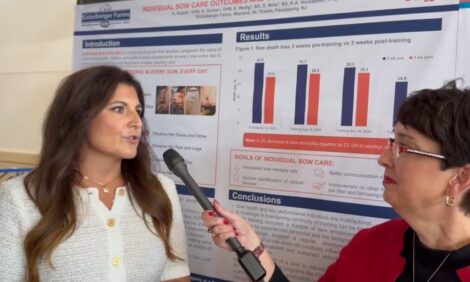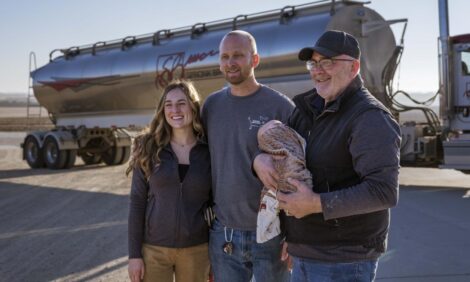



Sustaining Feed, Fuel and Food in the Future
Consumer spending on food is expected to double over the next decade, writes ThePigSite editor in chief, Chris Harris.In the developed world, there will be 1.6 billion people spending more on food and there is a direct link with the demand for corn in countries such as the US and China that are driving the global markets and the increase in production of biofuels around the world.
However, Jeroen Leffelaar, the Global Head of Animal Protein at Rabobank International, told the recent World Pork Conference in Bonn Germany, that in general biofuels are commercially not viable and the sector will necessarily remain dependent on government subsidies for the next 10 years.
At present, biofuel policies around the world are being sharpened and are moving away from tax support to mandatory requirements combined with tangible sustainable targets.
This move in policy will affect the production of crops that are not only used for biofuels but also for feed.
Mr Leffelaar said that the crops used for the production of biodiesel – rapeseed, soybeans and palm oil – and those for ethanol production – corn in the US and sugar cane and beet – will all have an affect on animal feed production.
While the use of soybeans for biodiesel will produce feed through the soybean scrap and corn will see the production of dried distillers' grains for feed, increased land usage, particularly in the case of corn, will place them in competition with feed.
"Only sugar cane production in Brazil will not affect the production of feed," said Mr Leffelaar.


He said there is a disparity in the production of corn around the world because in China and Brazil, it is grown to produce animal protein whereas in the US the focus is on growing corn for ethanol. In all, 40 per cent of the corn grown in the US goes to ethanol production.
When a significant amount of the corn crop goes to produce ethanol, there are tight corn stocks and this drives feed prices up.
However, Mr Leffelaar said that the demand for agri-commodities is expected to continue to rise but the way the commodities are used will vary around the world. The use of crops for feed is more related to regions with large populations, where the demand for fuel is largely in the developed markets.
This variation, together with social changes that will see more wealth in the developing world, will mean that feed costs are likely to remain high and volatile.
At present, just 36 per cent of the global land surface is suitable agricultural land and less than one-third of this is suitable arable land. Most of the global agricultural land is suitable as pasture land.
At the same time, the amount of agricultural land per capita is declining and improvements in yield are not meeting consumption demand. The gap between food consumption and yield of arable land is growing.
Against this background of high and volatile corn and fed prices, Mr Leffelaar said that pork prices this year have been rising because of a drop in production in the US and EU and also because of the growth in imports into South Korea and China.
However, he said that unlike the situation in 2008 when prices were high and there was a fall in the market in 2009, prices are not expected to fall next year after their rise this year.
He said that the market is going to see China still importing large volumes of corn and soy for feed to increase their domestic pig production but the high feed prices in the US will continue to hinder production.
In the EU, production will continue to decline and a drop in the sow herd numbers is expected.
Growth in the Brazilian pork industry will be hampered by the strength of the currency (the Real) and by the ban on imports by Russia.
"A two per cent production rise is expected in Brazil, but this growth could be quicker if the Russians raise their ban," said Mr Leffelaar.
In all, global production is expected to see a 0.2 per cent rise in production next year.
But Mr Leffelaar issued a warning note: "Higher prices and increased volatility are the new standard and the agricultural industry including pork farmers and meat processors must adapt to this new reality.
"Rabobank expects strong pork prices in 2012, assuming stagnation in Europe and the US and continuous economic growth in emerging countries," he said.
November 2011







